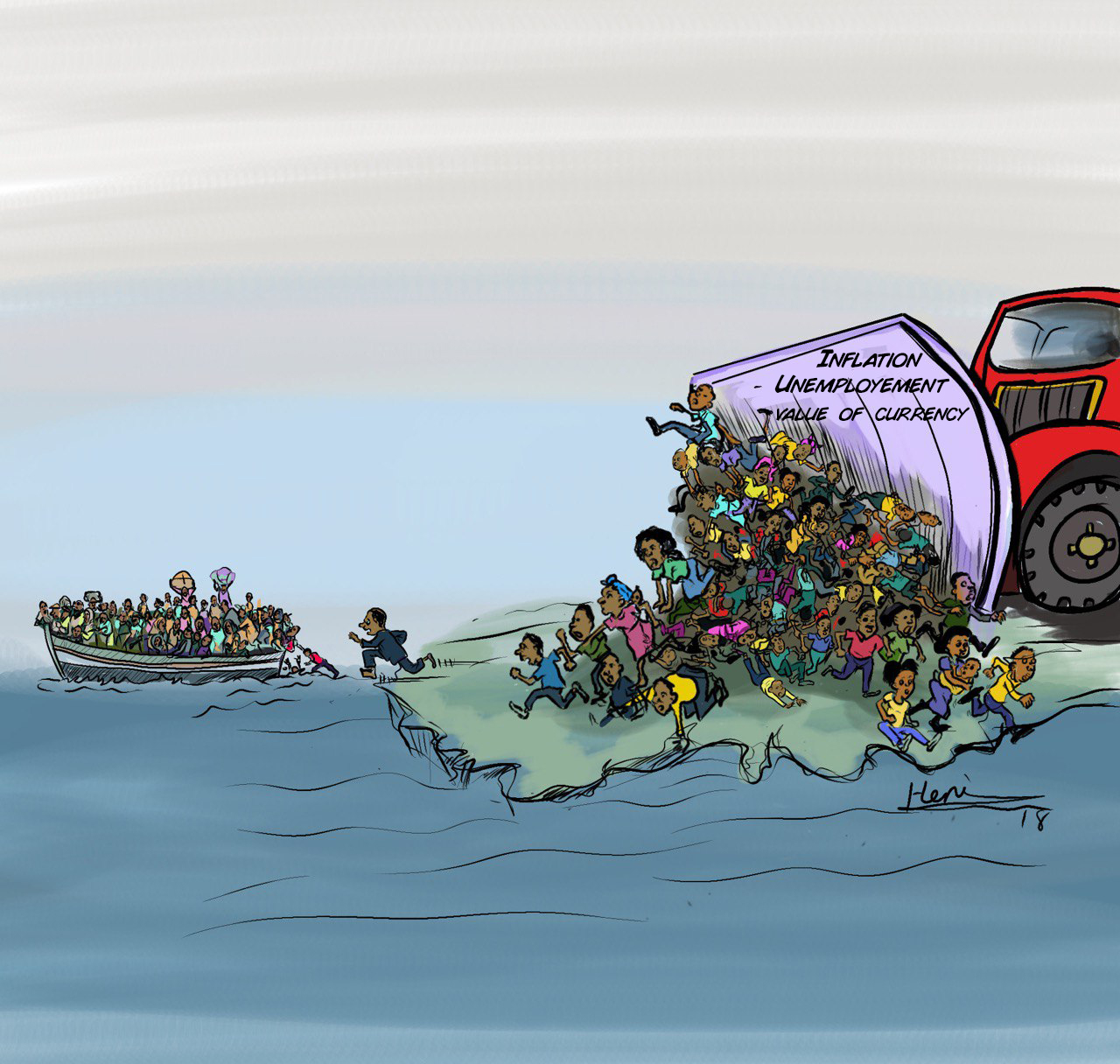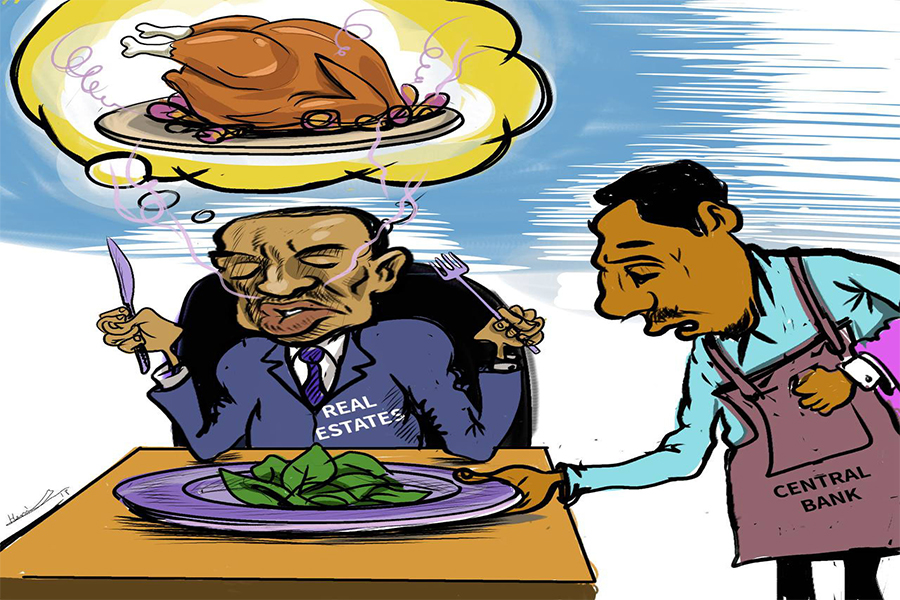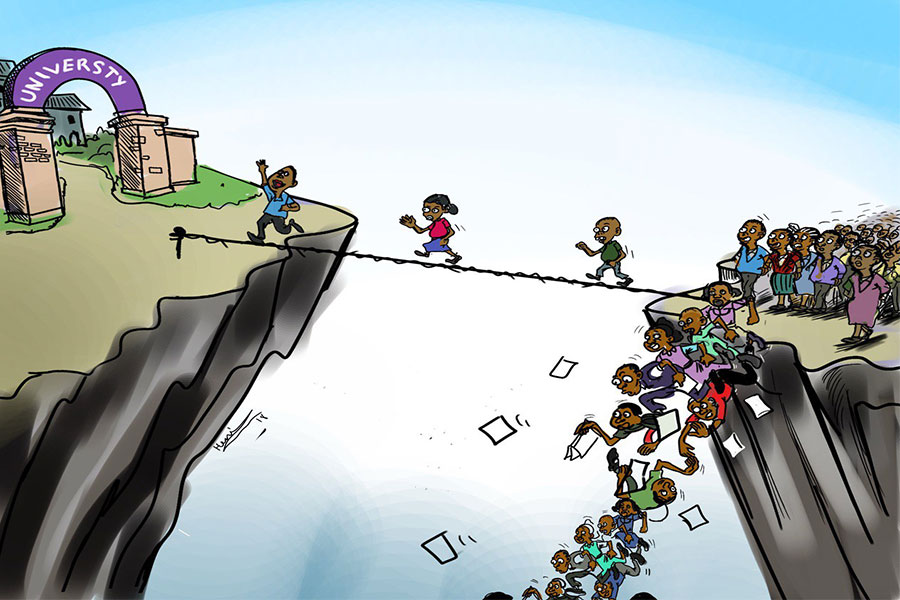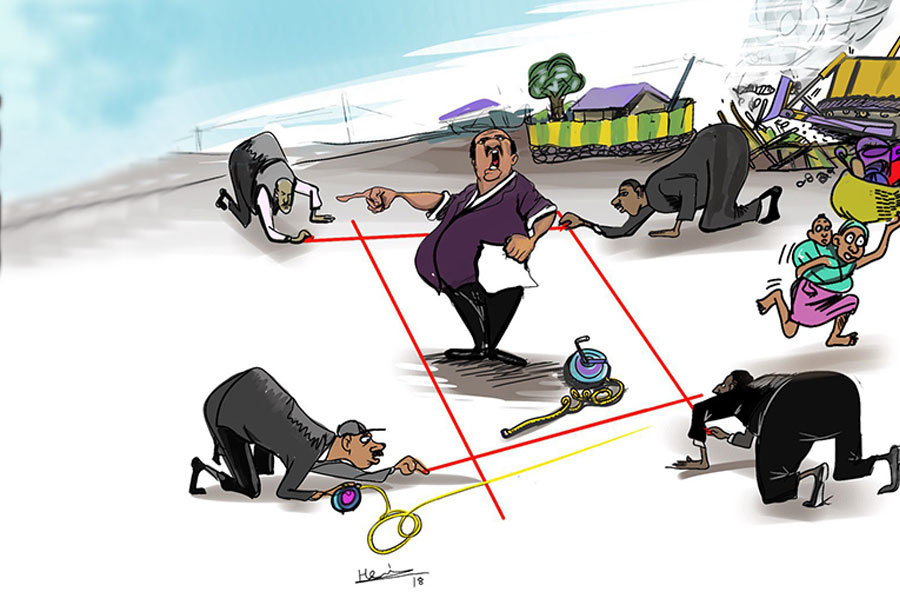
Photo Gallery | 173818 Views | May 06,2019
Oct 13 , 2025. By BEZAWIT HULUAGER ( FORTUNE STAFF WRITER ) , SURAFEL MULUGETA ( FORTUNE STAFF WRITER )
The school year in Addis Abeba began almost a month ago, yet across the capital, thousands of students still turn up to class without a single textbook. A four-year curriculum overhaul launched by the Ministry of Education was meant to modernise teaching and learning. Instead, it has triggered a scramble for books that many parents can ill afford and schools cannot reliably supply.
Mekonen Terefe, president of the Students-Parents-Teachers Association at Falcon Academy, feels the squeeze more than most. A retired civil servant living on a pension, he raises two daughters in Grade 10 and spends 4,000 Br a month on their school fees. When the girls needed the new set of textbooks, the 67-year-old scoured private stalls and paid 2,350 Br for a single shared copy, with individual books priced between 250 Br and 300 Br.
“It's difficult to afford on a pension,” he said. “I had to buy one copy for both daughters to share.”
However, teachers still expect homework drawn from texts the school has failed to provide, leaving the siblings struggling to keep pace.
The city's education bureau officials insist the recommended retail price for textbooks runs from 72 Br to 190 Br, depending on the grade. Parents say those figures look good only on paper. With the government-run distribution system stalling, books have surfaced almost exclusively in private kiosks from Arat Kilo to Stadium and Beherawi (National Theatre) areas. The trade is technically illegal, and arrests spike at the start and end of every academic year. But the mark-ups continue unchecked.
For families with multiple children, the burden multiplies.
One such family is Biniyam Sisay's, an IT technician at Safaricom who earns 28,000 Br a month. He watched costs soar when his four children all needed new materials. Last year, his eldest, among one in kindergarten and two in primary, had textbooks that never arrived. The school refunded what he paid and apologised. This year, the bill came to 17,840 Br, more than half his monthly income, including 3,000 Br for books alone.
His wife works in healthcare, but even with two salaries, they struggle to cover the expenses.
“Textbooks are the lifeblood of their education,” Biniyam said. “Teachers assume every student has them. But my son falls behind because he doesn’t.”
Private-school directors say they, too, have been left guessing. Falcon Academy, in Nifas Silk Lafto District, teaches 1,118 high school students (537 boys and 581 girls) and 937 pupils in elementary grades. Last academic year, the school collected 300,000 Br from parents, transferred it to the Education Bureau, and waited. Months later, with no books delivered, the Bureau refunded the money.
“This year, we didn’t even collect money because we don’t know the prices or when the books will be available,” said Kidane Birhane, the director. “The school year started almost a month ago, but we still don’t have the textbooks students need.”
Kidane has managed to obtain some elementary-level books, albeit at remarkably higher prices. Titles that cost far less a year ago now run between 50 Br and 320 Br. Two consignments have arrived; a third is on order, yet essential texts remain elusive, among them first-grade Mathematics, second-grade Behavioural Studies and Grade Three Afaan Oromo. Parents have already paid in full, but the gaps persist.
The School sells books at cost. According to Kidane, it still shoulders transport and distribution fees.
It is a pattern that is repeated across the city. At Aigoda School, which enrols 533 children, Rediet Sime, its director, submitted repeated requests for textbooks only to be told the new editions had not been printed. He was unconvinced. Last year, his School paid for Grade Nine and 10 Amharic and Afaan Oromo books that never surfaced, and he suspects finished copies are circulating elsewhere.
“We see them on the street stalls,” he said.
Mafed Academy is one of the 252 secondary schools in the city. Its 1,200 pupils from Grades one to eight, part of the city's total student population of 400,000 last academic year, placed orders for the 2025/26 school year in February. The first shipment of books arrived in August; the second round requested September arrived with a 15pc VAT in the interim, raising prices mid-order. Its Director, Habtamu Wendmu, was still waiting for English books for Grade Two and Mathematics for Grade Four that parents have already financed.
Parents like Tigist Girma, a businesswoman, take what precautions they can. She paid for books in advance during registration in July for her daughter in Grade Seven and her son in Grade Five. When the first batch landed, she was among the few who received the full set.
“We learned to prepare ahead because such problems happen often,” she told Fortune.
Families that did not pay early now hunt the markets, forced to choose between inflated prices and sending their children to school empty-handed. Officials in the Addis Abeba Education Bureau say the fault lies with schools that fail to pay promptly.
Zelalem Mulatu (PhD), the Bureau’s head, told local media that the city had earmarked 250 million Br from a revolving fund to print and distribute textbooks. According to Samson Melese, who oversees publication and distribution, a copy had been produced for every child, in addition to a 10pc allowance to cover shortfalls.
“Delays occur because schools lag in collecting payments from parents,” he said. “We encourage schools to cover the cost upfront and recover it later.”
Samson warned families against street purchases.
“There is no way to verify genuine curriculum books when parents buy from unauthorised sources," he said. "This is illegal, and we are taking action with security offices.”
In 2022/23, the country had 37,051 primary and middle-level schools, with nine in 10 being public. Oromia Regional State alone had 15,167 campuses. National primary enrolment reached 26 million students, while 3.7 million attended secondary grades. In Addis Abeba, private schools actually outnumber public ones, with textbook shortages hitting the city’s parents hardest.
Private schools that fail to procure and distribute books by October 10 will face temporary closure. The Education Ministry, however, has yet to publish this year’s editions, deepening the confusion. Its officials, speaking anonymously, claim that last year’s textbooks were loaned to private schools on a revolving basis, while public schools saved money by sharing one copy among several students over three to five years. For private learning institutions, outright procurement remains the only realistic option.
The Ministry’s sixth edition of a sector development programme, which spans five years beginning in 2020/21, set a target of one textbook for primary-level pupils. Education officials claim the target has been met, with most children holding an average of four books each. The data hides sharp regional contrasts, such as students in Tigray Regional State, who reportedly average nine textbooks apiece, while those in Somali Regional State have fewer than one.
In secondary schools, the picture is worse. Six years ago, the national average was 10.9 students per textbook. Dire Dawa topped the chart at 14.5; Gambella had the most favourable ratio at six. Officials blame distribution failures on logistics, inaccurate data and limited storage rather than shortfalls in printing. Progress on a promised ratio of 40 to one textbook-to-teacher guide remains patchy.
For generations, the General Education Quality Improvement Project (GEQIP), with donor backing, notably from the World Bank and the Global Partnership for Education (GPE), has helped achieve a near one-to-one textbook-to-pupil ratio, a notable feat in a country with over 100 million people. The Project has mobilised over 472 million dollars in its second phase alone. But the domestic fiscal contribution is disproportionately small. This financing model, while effective in scaling access, masks a fundamental fragility that the federal government lacks the fiscal autonomy to sustain the system independently.
But beneath this headline success lies a fragile ecosystem, driven less by market efficiency and more by donor cycles, bureaucratic procurement, and a stunted domestic publishing industry.
The Ministry, through the program's successive phases, has positioned itself as the de facto publisher-in-chief. Textbooks are procured through mammoth centralised tenders, printed en masse by selected firms, and mainly financed by external sources. Officials and experts credit this model for driving down per-unit costs, with some primary textbooks priced as low as 0.47 dollars, but not without trade-offs.
The apparent affordability is underwritten by donor-financed royalty waivers and bulk purchasing power, not by a sustainable domestic supply chain. When donor flows are delayed, the entire procurement cycle stalls, exposing the system’s over-dependence on external funding and central planning. Local printers are caught in a vicious cycle of dependency and uncertainty. Unlike global publishing houses that diversify through private school markets and digital platforms, local printers operate as quasi-subsidised subcontractors.
Printing delays, rising input costs (particularly paper and ink), and delayed payments further strain operations. Innovation is sidelined in favour of compliance with rigid state specifications. Many see this as disincentivising long-term investment in content development, teacher training materials, or ed-tech experimentation.
Infrastructure deficits and regional instability make textbook delivery a high-stakes endeavour outside of the capital. The last-mile delivery challenge, from warehouses to remote schools, has no technological shortcut. Poor storage conditions, fuel shortages, and administrative hoarding have created an unpredictable flow of materials. Textbooks often do not reach the students who need them on time. In pastoralist regions like the Afar or Gambella regional states, delays stretch into months.
For parents, especially in rural communities, imported textbooks remain prohibitively expensive, while domestic options are inconsistent. Where schools cannot supply titles, photocopying, often of outdated materials, becomes the fallback solution. The Ministry’s plans to shift toward e-learning and digital curricula remain ambitious, but deeply aspirational. It introduced bandwidth costs, device shortages, and maintenance deficits.
The Ministry plans to roll out e-textbooks to modernise learning, while high-school students and teachers are gradually receiving tablets loaded with Teaching & Learning Management Systems. In reality, printed books remain indispensable for younger classes, and connectivity issues make a wholesale switch to tablets unlikely in the near term.
“Technology won’t replace the truck,” said a policy adviser, a sentiment that displayed the mismatch between policy ambition and infrastructural capacity.
With less than one-fifth of schools enjoying reliable internet access, and many lacking even electricity, the push toward digital resources risks entrenching rather than alleviating inequality, fear experts such as Tesfaye Lega, a former president of the now-closed Kunuz College and a higher education researcher.
“Without a book, it’s like sending a soldier into battle without his equipment,” he told Fortune.
Tesfaye argues that letting private publishers print authorised textbooks could lower prices and ease pressure.
“Quality and colour are irrelevant if students cannot learn,” he said.
PUBLISHED ON
Oct 13,2025 [ VOL
26 , NO
1327]

Photo Gallery | 173818 Views | May 06,2019

Photo Gallery | 164044 Views | Apr 26,2019

Photo Gallery | 154106 Views | Oct 06,2021

My Opinion | 136582 Views | Aug 14,2021

Oct 11 , 2025
Ladislas Farago, a roving Associated Press (AP) correspondent, arrived in Ethiopia in...

Oct 4 , 2025
Eyob Tekalegn (PhD) had been in the Governor's chair for only weeks when, on Septembe...

Sep 27 , 2025
Four years into an experiment with “shock therapy” in education, the national moo...

Sep 20 , 2025
Getachew Reda's return to the national stage was always going to stir attention. Once...